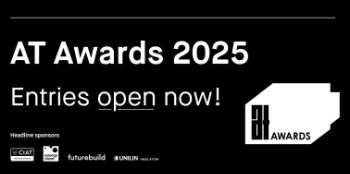Burma teak flooring
Contents |
[edit] Advantages
[edit] Moisture-proof
The special structure of teak allows it to breath, and it is particularly good at absorbing moisture in a humid environment. When the interior is too dry, moisture is released into the air, so that the environment is in a stable normal state. Natural indoor air conditioners are very beneficial to health, and because of this, teak flooring has become a floor that can be used in all climates, north and south.
[edit] Natural oxygen bar, healthy and pleasant
The natural Burmese teak floor can emit a natural mellow smell, which is claimed to be a calming agent. Laying teak flooring at home or placing teak furniture in the bedroom can play a role in indoor 'air conditioning', just like being in a natural oxygen bar, helping you sleep peacefully and relieve tension.
[edit] Natural health, natural environmental protection
Burma teak floors are made from the century-old teak wood in the virgin forests of Myanmar and processed by more than 60 unique environmental protection processes. Each solid wood floor maintains the natural structure of teak wood to ensure the natural environmental protection quality of the solid wood floor.
[edit] Not easy to deform, comfortable feet
Natural Burmese teak is formed as a medium and coarse fibre mesh, with a micro-pinhole structure, extremely stable, not easy to deform after drying, and with good elasticity and a comfortable feeling.
[edit] How to choose Myanmar teak floor
[edit] Colour
Burmese teak is rich in oil, its colour is warm and smooth, and the touch is delicate and smooth. Depending on different growth environments, different tree ages and different parts of the trunk of Burmese teak, Burmese teak can be divided into three types: light colour, medium colour and dark colour. Relatively speaking, the light colour is light yellow, the medium colour is dark yellow, and the dark colour is dark brown.
There is no difference in the quality of the teak floor itself between the shades of colour, and consumers can choose according to their own preferences and decoration styles.
[edit] Specifications
If the area is small, you can choose the standard board for paving. If the area is large, you can choose the wide board. If you like the delicate type, choose the short board. If you like the atmospheric paving style, choose a long board. Of course, what type of floor should be selected according to the colour, texture and paving method.
[edit] Texture
Burmese teak is mostly natural teak, which needs at least 70 years of age. The annual rings form the unique natural texture of teak, and the polished surface clearly shows beautiful ink lines, straight lines, mountain lines, uniform lines, leopard spots and shadow patterns.
The texture of Burmese teak flooring is naturally formed. No two floors will have absolutely the same texture. Therefore, when consumers buy Burmese teak flooring, if the texture is very similar, it may be artificially created.
[edit] Related articles on Designing Buildings
Featured articles and news
The Architectural Technology Awards
The AT Awards 2025 are open for entries!
ECA Blueprint for Electrification
The 'mosaic of interconnected challenges' and how to deliver the UK’s Transition to Clean Power.
Grenfell Tower Principal Contractor Award notice
Tower repair and maintenance contractor announced as demolition contractor.
Passivhaus social homes benefit from heat pump service
Sixteen new homes designed and built to achieve Passivhaus constructed in Dumfries & Galloway.
CABE Publishes Results of 2025 Building Control Survey
Concern over lack of understanding of how roles have changed since the introduction of the BSA 2022.
British Architectural Sculpture 1851-1951
A rich heritage of decorative and figurative sculpture. Book review.
A programme to tackle the lack of diversity.
Independent Building Control review panel
Five members of the newly established, Grenfell Tower Inquiry recommended, panel appointed.
Welsh Recharging Electrical Skills Charter progresses
ECA progressing on the ‘asks’ of the Recharging Electrical Skills Charter at the Senedd in Wales.
A brief history from 1890s to 2020s.
CIOB and CORBON combine forces
To elevate professional standards in Nigeria’s construction industry.
Amendment to the GB Energy Bill welcomed by ECA
Move prevents nationally-owned energy company from investing in solar panels produced by modern slavery.
Gregor Harvie argues that AI is state-sanctioned theft of IP.
Heat pumps, vehicle chargers and heating appliances must be sold with smart functionality.
Experimental AI housing target help for councils
Experimental AI could help councils meet housing targets by digitising records.
New-style degrees set for reformed ARB accreditation
Following the ARB Tomorrow's Architects competency outcomes for Architects.
BSRIA Occupant Wellbeing survey BOW
Occupant satisfaction and wellbeing tool inc. physical environment, indoor facilities, functionality and accessibility.























